Unité de Catalyse et de Chimie du Solide site Artois
Faculté des Sciences de Lens
PUBLICATIONS MARQUANTES 2016 :
- 7 publications [à Facteur d'impact > 5]
- «Rhodium-catalyzed one pot synthesis of hydroxymethylated triglycerides»
T. Vanbésien, E. Monflier, F. Hapiot
Green Chem, 2016, 18, 6687-6694 - doi: 10.1039/C6GC02706G
IF = 9,125
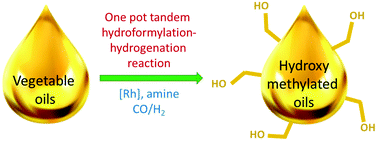 |
| The direct functionalization of the carbon-carbon double bonds of triglycerides is of major interest to access biosourced building blocks with unique molecular and functional properties. In this study, we described the synthesis of trihydroxylated triglycerides via a hydrohydroxymethylation reaction which consists in two consecutive Rh-catalyzed reactions, namely, a hydroformylation followed up by a consecutive reduction of the formyl groups. Contrary to two-step procedures described in the literature, no phosphane was used to coordinate the Rh-species, thus giving our strategy an industrial potential. Tertiary amines were used as ligands to promote the hydrohydroxymethylation reaction. The Rh/amine-catalyst proved to be active both in hydroformylation of the carbon-carbon double bond and reduction of the resulting aldehyde into alcohol. The proportion of hydroxyl groups grafted onto the triglyceride fatty chains was optimized by a careful choice of the experimental conditions, especially the nature and the amount of the tertiary amine, the reaction temperature, and the CO/H2 pressure. |

- «Ferroelectric Control of Organic/Ferromagnetic Spinterface»
S. Liang, H. Yang, H. Yang, B. Tao, A. Djeffal, M. Chshiev, W. Huang, X. Li, A. Ferri, R. Desfeux, S. Mangin, D. Lacour, M. Hehn, O. Copie, K. Dumesnil and Y. Lu
Adv. Mater. 2016, 28, 10204–10210 - doi: 10.1002/adma.201603638
IF = 19,761
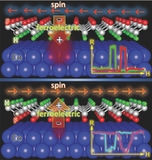 |
Organic multiferroic tunnel junctions based on La0.6Sr0.4MnO3/poly(vinylidene fluoride) (PVDF)/Co structures are fabricated. The tunneling magneto-resistance sign can be changed by electrically switching the ferroelectric polarization of PVDF barrier. It is demonstrated that the spin-polarization of the PVDF/Co spinterface can be actively controlled by tuning the ferroelectric polarization of PVDF. This study opens new functionality in controlling the injection of spin polarization into organic materials via the ferroelectric polarization of the barrier. |

- «Cyclodextrin-cobalt (II) molecule-ion pairs as precursors to active Co3O4/ZrO2 catalysts for the complete oxidation of formaldehyde: influence of the cobalt source»
L. Bai, F. Wyrwalski, M. Safariamin, R. Bleta, J.F. Lamonier, C. Przybylski, E. Monflier, A. Ponchel
J. Catal. 341 (2016) 191–204 - doi:10.1016/j.jcat.2016.07.006
IF = 6,844
 |
| The present paper reports on the use of β-cyclodextrin (β-CD) during the preparation of zirconia-supported cobalt oxide catalysts by impregnation and their performances in the complete oxidation of formaldehyde. The effect of β-CD was carefully characterized at different stages of the preparation with respect to three cobalt precursors (i.e. cobalt nitrate, acetate and acetylacetonate) by UV–Vis spectroscopy, dynamic light scattering, mass spectrometry, TG-MS analysis, X-ray diffraction and temperature-programmed reduction. It was found that β-CD had a strong impact on the final properties of catalysts, both in terms of reducibility and dispersion of active species. The results were rationalized to the occurrence of complexation between the cobalt precursor and β-CD and highlighted the pivotal role played by the counteranion. The best combination was obtained using cobalt nitrate with a β-CD/cobalt ratio 0.1 while the beneficial impact of cyclodextrins for the impregnation method was successfully extended to other cyclodextrins (α-CD and γ-CD). |

- «Cyclodextrins as Effective Additives in AuNPs-Catalyzed Reduction of Nitrobenzene Derivatives in a Ball-Mill»
S. Menuel, B. Léger, A. Addad, E. Monflier, F. Hapiot
Green Chem., 2016, 18, 5500–5509 - doi: 10.1039/C6GC00770H
IF = 9,125
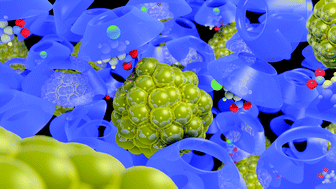 |
| At the boundary between mechanochemistry, supramolecular chemistry and catalysis, the present study explore the role of cyclodextrins (CDs) and other saccharide additives in the mechanosynthesis of gold nanoparticles (AuNPs) and their use as catalyst in the reduction of substituted nitrobenzene derivatives into their corresponding aniline products. The CDs not only allow to stabilize the AuNPs but they also help diffuse the substrate within the solid mixture via supramolecular means, and orient the chemical reaction to the selective formation of aniline derivatives. Parameters influencing both the formation of AuNPs and the synthesis of aniline derivatives have been investigated. We show that the catalytic performance strongly depends upon the nature of the saccharide additive, the nature and location of the substituent on the benzene, and the ball-milling conditions. Water also plays a key role in both the reduction mechanism of the nitro groups and the supramolecular interactions with the substrate. Very interestingly, the amount of reductive agent (NaBH4) was drastically reduced compared to reductions performed in solution. Additionally, the catalytic system could be recycled over three consecutive runs without significant loss in activity, thus highlighting the efficacy of the combination of mechanochemistry, supramolecular chemistry, and catalysis. |

- «Host-sensitized luminescence properties in KLa5O5(VO4)2:Eu3+ for solid-state lighting applications»
M. Colmont, S. Saitzek, A. Katelnikovas, H. Kabbour, J. Olchowka and P. Roussel
J. Mater. Chem. C, 2016, 4, 7277-7285 - doi: 10.1039/C6TC02258H
IF = 5,256
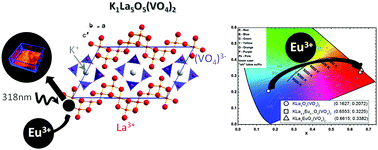 |
| Novel KLa5O5(VO4)2 blue-emitting phosphor was synthesized and studied in this paper. The introduction of Eu3+ with various concentrations (x=0, 0.05, 0.1, 0.5, 1, 1.5 and 2) into the host crystal structure is possible through solid-state synthesis and was followed by X-Ray Diffraction. In this context, KLa5O5(VO4)2 can be considered as an excellent host matrix to develop new phosphors. In the present work, the luminescent properties of KLa5-xEux(VO4)2 were investigated by fluorescence spectroscopy. The photoluminescence (PL) and PL excitation (PLE) spectra were recorded and discussed. KLa5-xEux(VO4)2 phosphors exhibit a bright reddish-orange light under UV excitation. The concentration quenching was determined to be 20 mol% (x= 1). KLa4Eu(VO4)2 phosphor cleverly substituted is an ideal candidate for solid-state lighting and more especially, as red phosphors for near-UV LEDs or to serve as the primary light source for white LEDs. |

- «A self-emulsifying catalytic system for the aqueous biphasic hydroformylation of triglycerides»
T. Vanbésien, A. Sayede, E. Monflier, F. Hapiot
Cat Sci Technol 2016, 6, 3064 - 3073 - doi: 10.1039/C5CY01758K
IF = 5,773
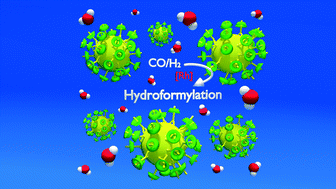 |
The Rh-catalyzed hydroformylation of the C C double bonds of triglycerides (T) was performed in aqueous medium through the formation of supramolecular complexes resulting from the inclusion of the alkenyl chains of T into the cavity of modified cyclodextrins (CDs). Mixing T and the aqueous catalytic phase in the presence of CDs led to emulsions that were characterized by phase diagrams and nephelometric measurements. Variations of the nature of the CDs, the reaction temperature, the CO/H2 pressure and the nature of the catalyst allowed for the optimization of the catalytic conditions. The concept was efficiently applied to commercial oils. Molecular dynamics simulations corroborated the experimental data. C double bonds of triglycerides (T) was performed in aqueous medium through the formation of supramolecular complexes resulting from the inclusion of the alkenyl chains of T into the cavity of modified cyclodextrins (CDs). Mixing T and the aqueous catalytic phase in the presence of CDs led to emulsions that were characterized by phase diagrams and nephelometric measurements. Variations of the nature of the CDs, the reaction temperature, the CO/H2 pressure and the nature of the catalyst allowed for the optimization of the catalytic conditions. The concept was efficiently applied to commercial oils. Molecular dynamics simulations corroborated the experimental data. |

- «Self-Healing Glassy Thin-Coating for High Temperature Applications»
S. Castanié, T. Carlier, F.O. Mear, S. Saitzek, J. F. Blach, R. Podor, L. Montagne
ACS Appl. Mater. Interfaces, 2016, 8 (6), pp 4208–4215 - doi: 10.1021/acsami.5b12049
IF = 7,504
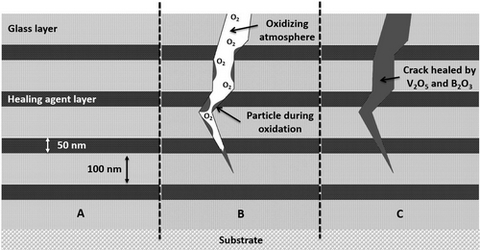 |
| Glass thin-films (with nanometer to micrometer thicknesses) are promising in numerous applications, both as passive coatings and as active components. Self-healing is a feature of many current technological developments as a means of increasing the lifetime of materials. In the context of these developments, we report on the elaboration of the first self-healing glassy thin film coating developed specifically for high temperature applications. This coating is obtained by Pulsed Laser Deposition (PLD) of alternating layers of vanadium boride (VB) and a multicomponent oxide glass. Self-healing is obtained through the oxidation of VB at the operating temperature. The investigation of the effect of elaboration parameters on the coating composition and morphology made it possible to obtain up to 7-layer coatings, with good homogeneity and perfect interfaces, and with a total thickness of less than 1 µm. The autonomic self-healing capacity of the coating has been demonstrated by an in situ experiment, which shows that a crack of nanometric dimension can be healed within a few minutes at 700°C. |

Faculté Jean Perrin - rue Jean Souvraz - SP 18 - 62307 Lens Cedex
tel : 03 21 79 17 05
fax : 03 21 79 17 55 |






